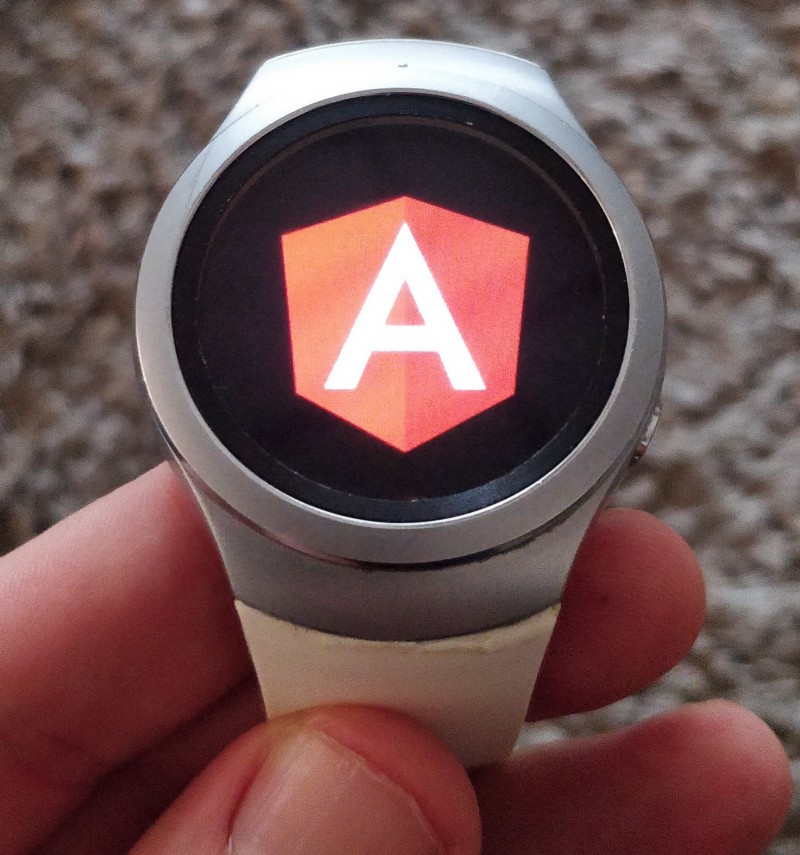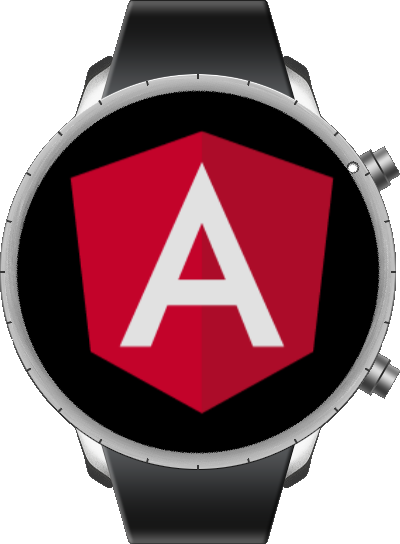Writing A Tizen Watch Application With Angular 6
Time for some code obscura. I own a Samsung Gear S2 watch, which at this point is getting 3 years old. The newer models still use the same Tizen SDK, so anything laid out here should work with those devices as well.

I had a small app in mind for the watch, but I didn’t like my options. Development for the watch can be done with either native C or as an Web application i.e. Vanilla JavaScript. There’s also Visual Studio extensions also added lately with .NET support. C is, well, C and JS gives me a vitriolic reaction.
So that got me thinking, Angular while being Typescript is in the end just Javascript, it should work right? And sure enough it does. Let’s kick things of with a simple POC and make everything from scratch.
To go through the sample you need the Tizen SDK (including the Command Line tools), and the Angular CLI
Step 1: Creating an Angular project
First let’s create a new Angular 6 project and try it out:
cd ~/git/
~/git/$ ng new angularTizenSample
~/git/$ cd angularTizenSample
~/git/$ ng serve
If everything went smoothly, you should see the Angular sample project. You can stop that, and let’s move on to the Tizen project.
Step 2: Creating a Tizen Web Project
The Tizen Studio is a bit flaky, so we’ll be using the command line tools to create a Tizen Web Project. Assuming you have the Tizen watch emulator up and running, let’s create a new project inside the Angular project and launch it:
~/git/angularTizenSample/$ tizen create web-project -p mobile-2.3.1 -t WebBasicApplication -n angularTizenSample
~/git/angularTizenSample/angularTizenSample/$ cd angularTizenSample
~/git/angularTizenSample/angularTizenSample/$ tizen build-web
~/git/angularTizenSample/angularTizenSample/$ tizen package -t wgt -- .buildResult/
~/git/angularTizenSample/angularTizenSample/$ sdb install .buildResult/angularTizenSample.wgt
~/git/angularTizenSample/angularTizenSample/$ sdb shell "wrt-launcher '-s Bsl3EwnDc9.angularTizenSample'"
That Bsl3EwnDc9.angularTizenSample is the application ID. It was created into the config.xml file.

The basic project on the Tizen Emulator From this project, we need the icon which we will move into src/assets, config.xml and .project files. We can delete everything else and rename this directory to simply “tizen”
Bridging the Gap
Next, let’s alter the Angular project to accommodate the watch (some WebKit based) — let’s enable all polyfills in polyfills.ts:
import 'core-js/es6/symbol';
import 'core-js/es6/object';
import 'core-js/es6/function';
import 'core-js/es6/parse-int';
import 'core-js/es6/parse-float';
import 'core-js/es6/number';
import 'core-js/es6/math';
import 'core-js/es6/string';
import 'core-js/es6/date';
import 'core-js/es6/array';
import 'core-js/es6/regexp';
import 'core-js/es6/map';
import 'core-js/es6/weak-map';
import 'core-js/es6/set';
Next, to see everything works let’s modify the project so that it simply shows the Angular logo and if you press on it, it changes to the Tizen logo.
Let’s grab an Angular logo and replace the inlined one and place it into assets as angular.png and take the icon.png from the tizen project and place it as tizen.png.
app.component.html:
<div style="text-align:center">
<img width="360" height="360" alt="Angular Logo" (click)="changeImage()" src="}">
</div>
app.component.ts:
import from '@angular/core';
@Component({
selector: 'app-root',
templateUrl: './app.component.html',
styleUrls: ['./app.component.css']
})
export class AppComponent {
title = 'angularTizenSample';
angular = 'assets/angular.png';
tizen = 'assets/tizen.png';
img = this.angular;
changeImage() {
if (this.img === this.angular) {
this.img = this.tizen;
} else {
this.img = this.angular;
}
}
}
Updating the Build Files
Let’s update the build files so that a simple
npm run tizen command will build
everything and create the Tizen package for us:
Lets include all the configuration files for Tizen in angular.json:
{
"$schema": "./node_modules/@angular/cli/lib/config/schema.json",
"version": 1,
"newProjectRoot": "projects",
"projects": {
"angularTizenSample": {
"root": "",
"sourceRoot": "src",
"projectType": "application",
"prefix": "app",
"schematics": ,
"targets": {
"build": {
"builder": "@angular-devkit/build-angular:browser",
"options": {
"outputPath": "dist/angularTizenSample",
"index": "src/index.html",
"main": "src/main.ts",
"polyfills": "src/polyfills.ts",
"tsConfig": "src/tsconfig.app.json",
"assets": [
"src/favicon.ico",
"src/assets",
],
"styles": [
"src/styles.css"
],
.....
Build commands in package.json:
{
"name": "angular-tizen-sample",
"version": "0.0.0",
"scripts": {
"ng": "ng",
"start": "ng serve",
"build": "ng build --prod",
"test": "ng test",
"lint": "ng lint",
"e2e": "ng e2e",
"tizen": "npm run build && npm run tizenPackage", "tizenPackage": "cd dist/angularTizenSample && tizen build-web && tizen package -t wgt -- .buildResult/",
"tizenRun": "cd dist/angularTizenSample && sdb install .buildResult/angularTizenSample.wgt && sdb shell \"wrt-launcher '-s Bsl3EwnDc9.angularTizenSample'\""
},
"private": true,
No we can npm run tizen to package our
app and npm run tizenRun to start it on
the emulator (or device, depends what sdb points to):

Angular on the emulator Running on an actual device you only need to follow the standard Tizen instructions — namely create a certificate, install it on your device and sign the wgt file.
Whats Next?
The next step would be to use the Tizen API{.markup–anchor .markup–p-anchor} to interact with the device functionality, such as button presses and bezel rotations. I created TypeScript interfaces for this and mocked these calls and almost fully run the app on the browser before even trying on the emulator/device.
Angular really shines when you hide the rather convoluted Tizen API related to phone communications under a service an simple offer a service for this functionality.
Notes
- Debugging? You can use the Tizen Studio to start the project and even debug it from there, but as I said, it’s a bit flaky. The IDE freezing and various errors are abound. You can also attach to the Web Inspector of the version that was started from the command line.
- Routing doesn’t work — everything needs to be in index.html.
- Performance is adequate, on par with regular JS apps.
Code from this sample can be found at https://github.com/ration/angularTizen.
Thanks for reading! Leave questions or comments below or contact me on Github.
By Tatu Lahtela on September 28, 2018.
Originally posted on Medium